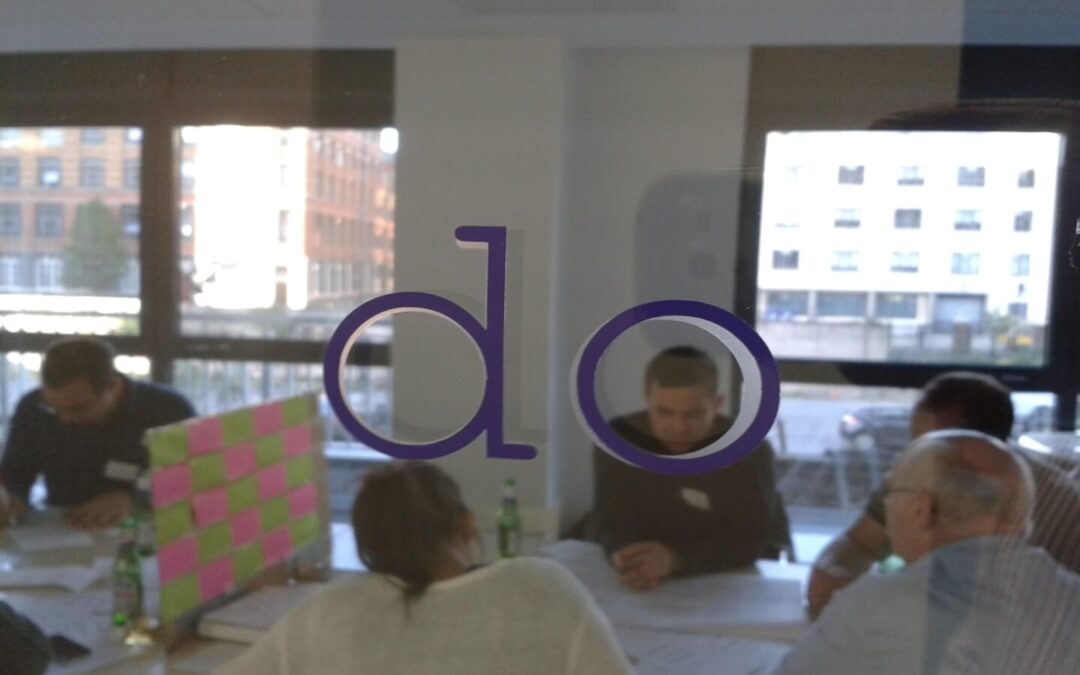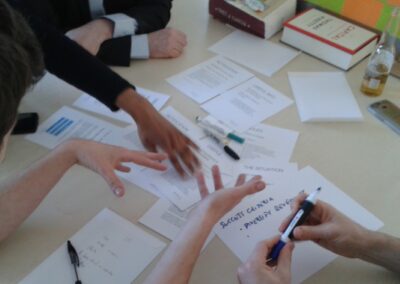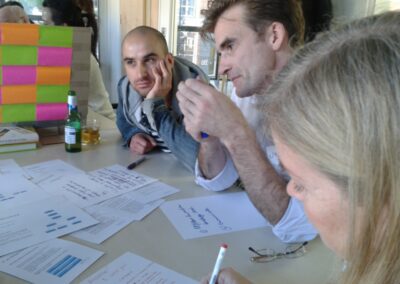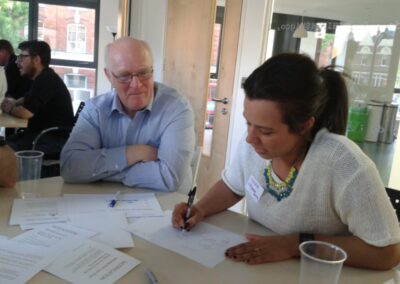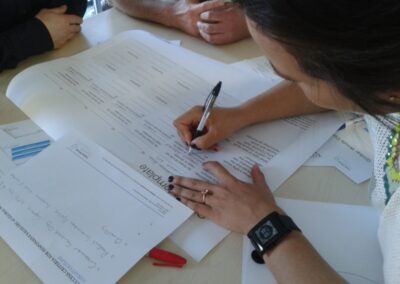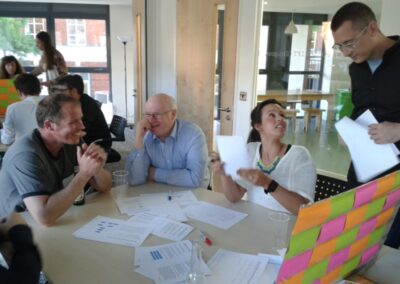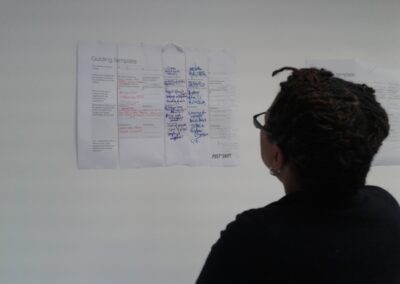On Tuesday, we hosted another edition of our Managing & Measuring a ResponsiveOrg game. The first edition generated lively conversation and debate, and we wanted to see what further insights others had on the challenges of trying to transform large incumbent organisations into newer ways of working and the mindsets needed to achieve this.
If you haven’t read our blog post on the previous event, the premise of the workshop is an intensive real-time simulation game that aims to show how hard it can be to set and track realistic goals for organisational transformation in a company that does not yet fully understand what that means. It involves asking participants to come up with a vision and success criteria (KPIs or similar) for transforming a fictional organisation into a ResponsiveOrg, whilst also replicating the all-too-familiar environment of distracting information flows, management demands and bureaucratic politics of a traditional corporate structure (a lot more fun than it sounds!).
Our attendees threw themselves into this task with gusto, determined to get the job done, but (as expected) only one team managed to complete all their deliverables, and interestingly this was the team that had approached the task in the most disruptive way. They (literally) tore up the rulebook due to the time constraints, and divided and conquered the challenge, with each member of the team given different tasks to complete rather than trying to do everything as a collective. We were impressed! Having had discussions earlier in the exercise to get the whole team clear on their shared approach and objectives, they pushed out autonomous responsibility for the different tasks and ultimately delivered under pressure. Responsiveness in action!
After the high energy of the game, the ‘post-match’ analysis was where things got really interesting. Discussion touched on several topics, as the game is designed to trigger lots of issues to reflect on. One of the first things noted was how good the simulation was at replicating real-life work conditions, and this led into a deep discussion on the challenges associated with trying to shift established paradigms and constructs whilst your leaders and decision makers are still operating within the old structures and mindsets.
It reminded me a lot of one situation I got myself into at my last organisation, where several hours were “spent” with senior change agents developing a slide deck to ask for approval from the Executive to remove layers of approval in the organisation – if we were truly operating in the new way, surely we’d just decide by ourselves and remove the layers we felt were unnecessary. Logically, we should have just been able to give the Exec an FYI – vive la revolution! But no, of course, the slide deck was developed in excruciating detail, and a formal presentation made. At times in these working cultures, it can feel like you are going slowly mad – no wonder many advocates and drivers for change get frustrated and leave, or start something new from scratch. A good way to create the beginning of a shift is to become a role model for new ways of working, and simply (but respectfully!) refuse to entertain old thinking. However, if you are too militant about it, this can be alienating to leaders, and possibly mark you out as a disruptive outlier, and even have implications for how willing they are to listen to your ideas and recommendations in the future. Whilst it is often possible to disrupt and create change amongst your immediate network, this change is unlikely to take effect and become embedded if your leaders are not on board and leading it too. Yet at the same time, it can feel like enabling the old ways if you ‘pander’ to them and operate within those constructs too much.
So what’s a well-intentioned change agent to do?! In my experience, there is a delicate balance to be struck between role modelling the new behaviours and beginning the very process of transformation within new paradigms, whilst still appreciating that your leaders may not yet have the new mindset required and bringing them on the journey with you. One way to do this is to understand what it is they need to feel comfortable with the change. As was pointed out in our discussion, in most cases (business being what it is) they will need to understand how this helps them make more money or achieve strategic goals – this aspect of business is unlikely to go away. We’ve found that an evidence-based data-led approach is one of the most compelling ways to demonstrate the business case for developing more responsive traits within an organisation, and it is an approach that lends itself well to companies still operating in an industrial, efficiency-led way – KPIs tend to be the lifeblood of these places (we all know what gets measured, gets done, right?).
But, do KPIs have a place in the ResponsiveOrg? This was a challenge posed during our discussion: surely developing KPIs for responsiveness is going back to enabling the kind of mindset and culture that we are trying to move away from? Some people felt that if organisations move to becoming more purpose-led as opposed to profit-led, then KPIs become irrelevant.
At PostShift, we don’t take the view that responsiveness and KPIs need to be mutually exclusive (indeed, as described above, the right sort of measures can become a really valuable tool in helping to shift entrenched views of leaders on responsiveness and efficiency). After all, ResponsiveOrgs are aiming to be successful too, and measures are one of the best ways to know how successful you are. But ‘success’ needs to be clearly defined, and absolutely can include elements of your purpose as an organisation. As well as defining what success looks like, you also need to select the right things to measure against that success – incorporating both qualitative and quantitive inputs to develop richness of data. Incumbent success criteria will likely need to be reviewed and sense-checked against unintended consequences. For example, don’t tell me that becoming more responsive to customers is your goal and then target call centre staff on their Average Handling Time above everything else; you either need to change your measure, or rethink your true goal. The key, I think, is to develop more grown up measures rather than focus on myopic individual KPIs.
But, if you can link these measures and success criteria to the business strategy, that can unlock more freedom to disrupt and effect further change, with the turbo-charge being that this time, your leadership is right behind you.
If you would like to find out more about the workshop, which we also run as private sessions within organisations to help leaders and change agents alike understand better how to get started with digital transformation, please get in touch.

